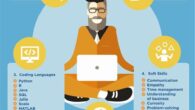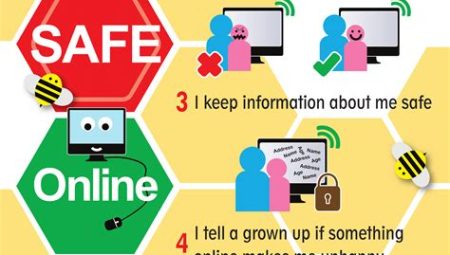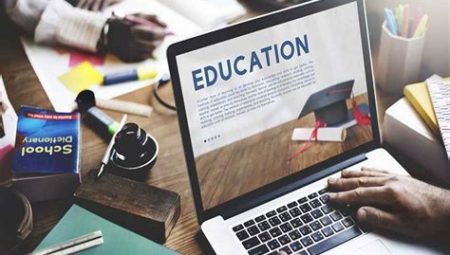The Future of Education: Exploring the Dynamic Landscape of Learning Technologies
In recent years, the field of education has been rapidly evolving with the integration of innovative learning technologies. From artificial intelligence and virtual reality to mobile learning and blockchain, the possibilities for enhancing the way students learn are endless. In this blog post, we will delve into the exciting developments that are shaping the future of education. We will explore the integration of artificial intelligence in education, the benefits of blended learning, the immersive experiences offered by virtual reality, and the potential of gamification to engage and motivate students. Additionally, we will discuss personalized learning, mobile learning, the Internet of Things, data analytics, augmented reality, and blockchain, and how these technologies are revolutionizing the way we approach education. Join us as we uncover the transformative impact of these dynamic learning technologies on the future of education.
Table of Contents
Integration of Artificial Intelligence in Education
Artificial Intelligence (AI) has revolutionized many aspects of our daily lives, and now it’s making its way into the education sector. The integration of AI in education is changing the way students learn and teachers instruct, offering a wide range of benefits and opportunities for the future of education.
AI can personalize the learning experience for each student by analyzing their strengths and weaknesses, adapting the curriculum to their individual needs. This personalized learning approach can help students to grasp concepts at their own pace, ultimately leading to better academic performance and growth.
Furthermore, AI can assist teachers by providing valuable data analytics on student progress, helping identify areas that need improvement and enabling educators to tailor their teaching methods accordingly. This data-driven approach can lead to better educational outcomes and more effective instruction.
With the integration of AI, education is taking a leap into the future, offering new possibilities and potential for enhanced learning experiences. As technology continues to advance, the role of AI in education will only continue to grow, shaping the way we teach and learn for years to come.
Blended Learning: Combining Online and Traditional Instruction
Blended Learning: Combining Online and Traditional Instruction
Blended learning has become increasingly popular in the education sector, as it offers the best of both worlds by combining online and traditional instructional methods. This approach allows students to have the flexibility of online learning while also benefiting from the face-to-face interaction and structure of a traditional classroom setting.
One of the key advantages of blended learning is the ability to cater to a variety of learning styles. Students who thrive in a traditional classroom environment can still benefit from in-person discussions and group activities, while those who prefer the flexibility and self-paced nature of online learning can have the opportunity to learn at their own pace.
Another benefit of blended learning is the opportunity for teachers to personalize instruction. With online learning platforms, educators can provide individualized feedback and track the progress of each student, while also using face-to-face time to provide targeted support and guidance based on the student’s specific needs.
Furthermore, blended learning can help students develop important skills such as time management, self-discipline, and digital literacy, which are essential for success in today’s technology-driven world. By experiencing both online and traditional instruction, students can develop a well-rounded skillset that prepares them for higher education and future careers.
Virtual Reality: Enhancing Immersive Learning Experiences
Virtual Reality (VR) is revolutionizing the way we experience learning by providing immersive and interactive environments for students. Through the use of VR technology, students are transported to virtual worlds where they can explore, interact, and engage with the subject matter in ways that were once unimaginable.
With VR in education, students can go on virtual field trips to historical sites, explore the human body in 3D, or even conduct science experiments in a safe and controlled virtual environment. This not only enhances their understanding of the material but also makes learning more exciting and memorable.
Furthermore, VR allows for personalized learning experiences, where students can learn at their own pace and in their own way. This technology also makes it possible for students to collaborate with their peers in virtual spaces, promoting teamwork and communication skills.
Overall, VR is enhancing immersive learning experiences by providing a dynamic and engaging way for students to interact with educational content.
Gamification: Motivating and Engaging Students
Gamification is a powerful tool in education, leveraging game design elements to motivate and engage students in the learning process. By incorporating gamified elements such as challenges, rewards, and competition, educators can create a more dynamic and interactive learning environment that encourages active participation and boosts student motivation.
One of the key benefits of gamification in education is its ability to make learning fun and engaging. When students are immersed in a gamified experience, they are more likely to be motivated to complete tasks and achieve learning objectives. This can lead to increased student engagement, participation, and ultimately, better learning outcomes.
Furthermore, gamification can also help to foster a sense of achievement and progress among students. By setting clear goals, providing real-time feedback, and offering rewards for completing tasks, students can see their progress and feel a sense of accomplishment, which can boost their confidence and enthusiasm for learning.
Ultimately, by incorporating gamified elements into the learning process, educators can create a more engaging, motivating, and rewarding educational experience for students, leading to improved learning outcomes and a more positive attitude towards learning.
Personalized Learning: Tailoring Education to Individual Needs
Personalized learning is a teaching method that tailors educational content, pace, and instructional approach to each student’s unique learning needs and interests. This approach recognizes that every student is different, and therefore, learns in their unique way. By personalizing their learning, educators can cater to their individual strengths, weaknesses, and interests, ensuring a more effective and engaging learning experience.
With personalized learning, students have the flexibility to progress at their own pace, allowing them to spend more time on concepts they find challenging, and advance more quickly through material they find easier. This personalized approach also enables students to explore subjects they are passionate about, fostering deeper engagement and a love for learning.
Moreover, personalized learning can also leverage technology, such as adaptive learning platforms and artificial intelligence, to provide individualized learning experiences. These technologies can analyze a student’s performance and adapt the educational content and activities to suit their unique learning needs.
Overall, personalized learning holds the potential to revolutionize education by providing a more tailored, engaging, and effective educational experience, empowering students to reach their full potential.
Mobile Learning: Education on the Go
Mobile learning, or m-learning, refers to the use of mobile devices such as smartphones, tablets, and laptops for educational purposes. With the increasing availability and affordability of mobile devices, m-learning has become a popular method for delivering educational content to students.
One of the key benefits of mobile learning is its accessibility. Students can access learning materials anytime, anywhere, making education more convenient and flexible. This is particularly useful for individuals with busy schedules or those who are unable to attend traditional classes.
Additionally, mobile learning allows for personalized education. Students can learn at their own pace and tailor their learning experience to their specific needs and interests. They can also access a wide range of resources, including e-books, videos, and interactive quizzes, all from their mobile devices.
Furthermore, m-learning encourages collaboration and communication among students and teachers. With features such as instant messaging and video conferencing, students can engage in discussions, ask questions, and receive feedback in real time, creating a more interactive and engaging learning environment.
Internet of Things in Education: Connecting Learning Environments
Internet of Things (IoT) has revolutionized the way we interact with everyday objects, and its application in education has the potential to create dynamic and interactive learning environments. By connecting various devices and systems, IoT can enhance the educational experience and provide students with opportunities for personalized learning.
One of the key benefits of IoT in education is the ability to gather and analyze data to gain insights into student behavior, engagement, and learning progress. With IoT-enabled devices, educators can track student movements, monitor their interaction with learning materials, and customize the learning experience based on individual needs.
Moreover, the integration of IoT in education can create a seamless and interconnected learning environment, where students can access educational resources from anywhere, collaborate with their peers in real time, and receive immediate feedback on their academic performance.
Overall, the Internet of Things has the potential to transform education by bridging the gap between physical and digital learning spaces, providing students with immersive and interactive learning experiences, and empowering educators with valuable insights to enhance teaching strategies.
Data Analytics: Leveraging Insights for Better Educational Outcomes
With the advancement of technology, data analytics has become an integral part of the educational sector. By leveraging insights gained from data analytics, educators and institutions can make informed decisions that lead to better educational outcomes for students.
One of the main advantages of data analytics in education is the ability to track and analyze student performance. By collecting and analyzing data on student progress, educators can identify areas where students are struggling and provide targeted support to help them improve. This personalized approach to learning can result in improved academic performance and overall student success.
In addition to tracking student performance, data analytics can also be used to identify trends and patterns in educational practices. By analyzing data on teaching methods, curriculum effectiveness, and student engagement, educators can gain valuable insights that can be used to refine and improve the educational experience for students.
Furthermore, data analytics can also be used to evaluate the impact of various educational initiatives and interventions. By measuring the effectiveness of different programs and strategies, educators can make data-driven decisions about which approaches are most successful in improving student outcomes.
Augmented Reality: Overlaying Digital Content in Real World
Augmented Reality (AR) is a technology that superimposes a computer-generated image on a user’s view of the real world, providing a composite view. It is widely used in various fields, including education, to enhance learning experiences and engage students in a more interactive way. With AR, digital content such as 3D models, animations, and videos can be overlaid onto physical objects, creating immersive and interactive learning environments.
One of the key advantages of using AR in education is its ability to provide a hands-on learning experience. Students can interact with digital content in real-time, allowing them to explore complex concepts in a more visual and tangible way. For example, in a science class, students can use AR to explore the solar system by overlaying virtual planets and stars onto the classroom environment, giving them a better understanding of celestial bodies and their movements.
Furthermore, AR can also personalize the learning experience for individual students. By overlaying digital content in the real world, educators can tailor the content to suit the specific learning needs and preferences of each student. For instance, in a language learning setting, AR can be used to display interactive vocabulary cards or language exercises based on each student’s proficiency level, making the learning process more engaging and effective.
Overall, the integration of AR in education has the potential to revolutionize the way students learn and interact with content. By overlaying digital content in the real world, AR provides a dynamic and immersive learning experience that can significantly enhance student motivation, engagement, and retention of knowledge.
Blockchain: Securing Educational Records and Credentials
Blockchain technology has revolutionized many industries, and now it is making its way into the education sector. One of the key benefits of using blockchain in education is the secure and tamper-proof storage of educational records and credentials. Since blockchain is a decentralized and distributed ledger, it ensures that the records stored on it cannot be altered or deleted without leaving a trace. This feature makes it an ideal solution for securing sensitive educational data.
Traditionally, educational records and credentials have been susceptible to fraud and manipulation. With paper-based records or centralized electronic databases, there is always the risk of unauthorized access or tampering. However, by using blockchain technology, educational institutions can significantly reduce these risks and enhance the integrity of their records and credentials.
Moreover, the use of blockchain for securing educational records and credentials can also streamline credential verification processes. Employers and academic institutions can easily verify the authenticity of a candidate’s qualifications by accessing the blockchain, thus reducing the time and resources required for credential verification.
Overall, the integration of blockchain technology in the education sector has the potential to revolutionize the way educational records and credentials are managed and verified. By leveraging the power of blockchain, educational institutions can ensure the security and authenticity of their records, ultimately benefiting students, employers, and the education system as a whole.





